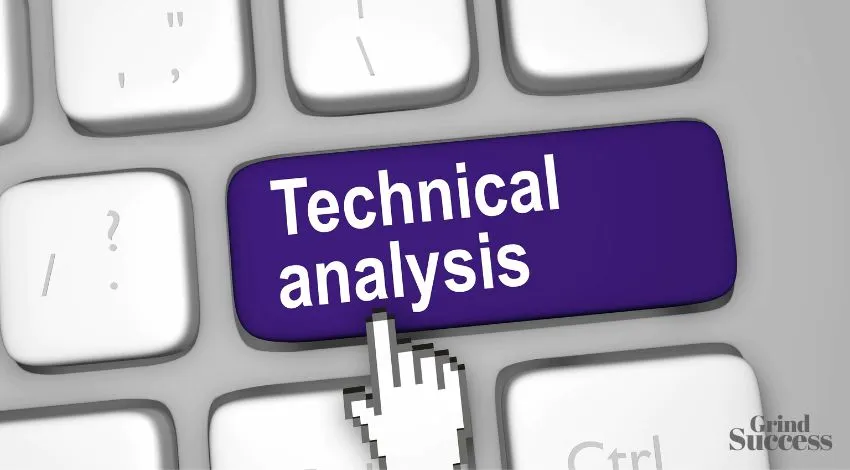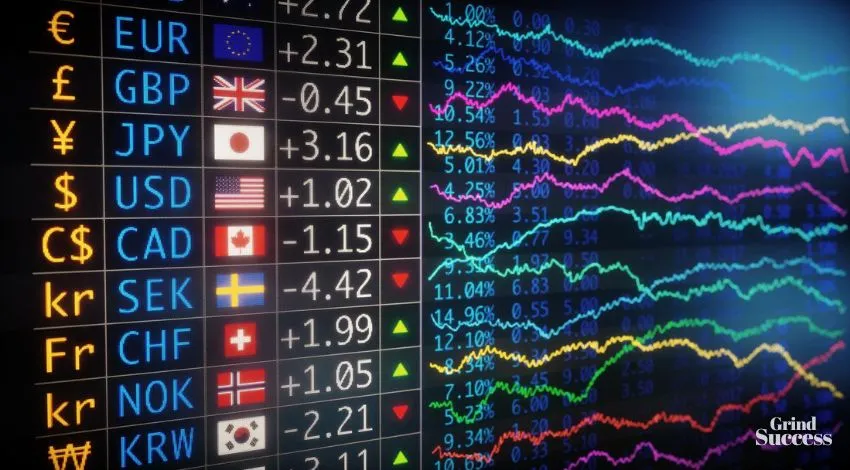Mastering Technical Analysis: Tools and Indicators for Successful Stock Market Trading

Navigating the financial markets can often feel like steering a ship in a storm. The waters are unpredictable, and while there’s potential for great reward, the risk of shipwreck is always present.
Amidst this uncertainty, one strategy has grown in popularity over the years—technical analysis. In essence, it’s an attempt to understand the storm’s patterns to navigate more successfully.
In This Page
The What and Why of Technical Analysis
Technical analysis is a method used to forecast the future direction of price movements by examining past market data, primarily price, and volume.
In essence, technical analysts (also called technicians) are akin to meteorologists—they analyze patterns to predict future behavior. However, instead of weather patterns, technicians study price and volume patterns.
One of the initial steps when embarking on the journey of technical analysis is to choose the appropriate charting platform. At this juncture, comparing different platforms, like comparing the Ycharts price and its alternative, Koyfin, can be valuable.
It’s worth noting that this isn’t an endorsement of Koyfin, but rather an illustration of the need to understand the range of tools available and select one that best fits your unique requirements.
Essential Tools and Indicators of Technical Analysis
Much like an artist with a palette of colors, a technician uses an array of tools and indicators to draw a picture of potential price movements. Here are some of the most widely used:
1. Moving Averages
Moving averages are fundamental yet powerful tools that help to smooth out price data, effectively reducing ‘market noise’ and enabling easier identification of the underlying trend.
It’s like looking at the path of an airplane from a distance—you get a clear view of the overall trajectory, even if the plane had to navigate turbulence in the short term.
2. Relative Strength Index (RSI)
The Relative Strength Index (RSI) is a powerful momentum oscillator that assesses the velocity and magnitude of price movements. It’s like a speedometer for stocks, helping traders gauge the speed and direction of price changes.
3. MACD
The Moving Average Convergence Divergence (MACD) is a momentum indicator that emphasizes the relationship between two moving averages of a stock’s price.
It provides valuable insights into the interaction and divergence of these moving averages, aiding traders in identifying potential shifts in market momentum.
The MACD is like a heart monitor for the stock market—it can show the ‘pulse’ or momentum of price movements, indicating whether the price is likely to move up or down.
4. Bollinger Bands
Bollinger Bands are volatility bands positioned both above and below a moving average. The width of the bands varies based on the standard deviation, which changes as volatility increases or decreases.
Bollinger Bands act as dynamic support and resistance levels and can also signal the overbought or oversold condition of a stock.
My apologies for misunderstanding the word count. Let’s extend this article with an additional in-depth exploration of some of the tools and strategies.
5. Deeper Dive into Moving Averages
Moving averages come in several forms, each with its unique characteristics and use cases. For instance, the Simple Moving Average (SMA) gives equal weight to all data points, while the Exponential Moving Average (EMA) assigns more weight to recent data points.
The EMA reacts more quickly to price changes, which can be both an advantage and a disadvantage, depending on the trader’s strategy and the market conditions.
Furthermore, several strategies involve using two or more moving averages together. For instance, a common technique is to use a shorter-term and longer-term moving average. When the shorter-term average crosses above the longer-term average, it signals an upward trend, and vice versa.
6. Understanding Fibonacci Retracement
Fibonacci Retracement is a popular technical tool that draws horizontal lines to indicate potential support and resistance levels based on the Fibonacci numbers, a sequence where each number is the sum of the two preceding ones.
Traders use these levels to identify potential reversal points in the market. Despite its mathematical elegance, remember that Fibonacci Retracement is a tool, not a certainty—there’s no guarantee that the price will reverse at these levels.
7. The Ichimoku Cloud: A Comprehensive Indicator
The Ichimoku Cloud, also referred to as Ichimoku Kinko Hyo, is a versatile indicator that serves a variety of purposes in technical analysis. It helps identify support and resistance levels, determines trend direction, measures momentum, and even generates trading signals.
It’s like having several indicators in one. However, it can appear complex and intimidating at first glance due to its multiple lines and “clouds.” Still, with practice, the Ichimoku Cloud can become a valuable part of your technical analysis toolkit.
8. Diving into Elliott Wave Theory
The Elliott Wave Theory is a popular technique in technical analysis that traders employ to analyze market cycles and predict trends. By identifying extremes in investor psychology, highs and lows in prices, and other collective factors, this approach provides insights into market behavior.
The theory was discovered and developed by Ralph Nelson Elliott, a professional accountant, in the 1930s, who unveiled the underlying social principles and devised the analytical tools that form the basis of this methodology. It’s a sophisticated and comprehensive approach, but it can be highly subjective.
9. The Art of Volume Analysis
Volume, the number of shares or contracts traded in a security or an entire market during a given period, is often overlooked in trading, but it’s crucial.
It shows the strength behind market moves; a price jump (or drop) with substantial volume is seen as a stronger, more significant move than a similar move with weak volume. Thus, volume analysis can add significant value to understanding market trends.
Reading the Tea Leaves: Chart Patterns
Chart patterns are the bread and butter of technical analysis. These formations, such as triangles, rectangles, and head and shoulders patterns, can signal the probability of a price breakout, either upward or downward.
Recognizing these patterns is akin to reading tea leaves—they provide clues about the future based on established patterns.
The Power of Candlestick Patterns
Candlestick charting techniques, which originated from ancient Japanese rice trading, are among the oldest and most visual tools used to predict price movements.
Each candlestick provides an in-depth view of price movement in a given time period, revealing the opening, closing, high, and low prices. Mastering candlestick patterns is like learning Morse code—once you understand the language, you can glean substantial information at a glance.
Risk Management: The Holy Grail of Trading
No matter how precise your technical analysis is, there is always a risk that the market will not behave as expected. Therefore, risk management should be the backbone of any successful trading strategy.
This includes setting stop losses to limit potential losses, diversifying your portfolio to spread risk, and most importantly, only risking what you can afford to lose. Trading without risk management is like skydiving without a parachute—it’s dangerous and likely to lead to a hard landing.
Looking Back to Look Ahead: Backtesting
Backtesting is a critical step in assessing the viability of a trading strategy. It involves applying your trading strategy to historical data to see how it would have performed.
While past performance is no guarantee of future results, backtesting allows you to refine your strategy and build confidence in its predictive abilities.
Wrapping Up: The Continuous Learning Journey
Mastering technical analysis is akin to learning a new language. It requires dedication, practice, and above all, patience. However, the rewards for those who are willing to navigate the complex pathways can be considerable. It provides a compass to navigate the often tumultuous financial markets.
Keep in mind, though, that the markets are a reflection of collective human psychology, and thus, an element of unpredictability is ever-present.
But with the right tools, a disciplined approach, and continuous learning, you can greatly increase your chances of trading success.
In the world of trading, there’s always another storm to weather and another profit to chase. May your journey be prosperous?
This is a Contributor Post. Opinions expressed here are opinions of the Contributor. Grindsuccess does not endorse or review brands mentioned; does not and cannot investigate relationships with brands, products, images used and people mentioned, and is up to the Contributor to disclose.
Email, SMS, and more — Klaviyo brings your marketing all together, fueling growth without burning through time and resources.
Deliver more relevant email and text messages — powered by your data. Klaviyo helps you turn one-time buyers into repeat customers with all the power of an enterprise solution and none of the complexity.







